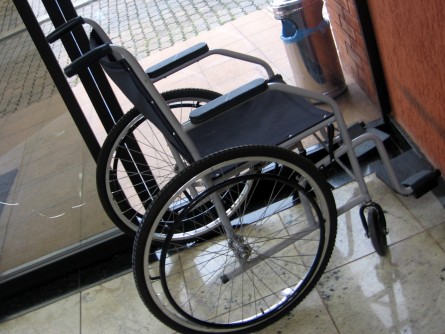Most notably, in the race to be the association's president, Rudy H. Fichtenbaum, a professor of economics at Wright State University with strong support among labor organizers, beat Irene T. Mulvey, a Fairfield University mathematics professor supported by several of the group's past leaders, by a vote of 2,246 to 1,295. (About a tenth of the association's members voted in the elections, a turnout that is fairly typical for the group.)
Mr. Fichtenbaum, the treasurer of the AAUP's Collective Bargaining Congress and a prominent advocate for academic labor in Ohio, was a strong critic of the association's ouster last year of its general secretary, Gary Rhoades, who was widely liked by union organizers in the field but often clashed with the central-office staff. Mr. Rhoades, who resigned after coming into conflict with the AAUP's current president, Cary Nelson, and after seeing his reappointment as general secretary opposed by the association's executive committee, was joined by a long list of leaders of the AAUP's unionized affiliates in endorsing Mr. Fichtenbaum's candidacy.
Unionization was not baked into the AAUP's cake when it was first formed in the early part of the 20th century. And it remained anathema to the AAUP well into the 1970s. As Gordon Arnold wrote in his book The Politics of Faculty Unionization, "it was the “prevailing view that American higher education was a meritocracy, and that union impulses were the result, at least in part, of professors who could not compete with their elite peers.” In a study for the Carnegie Commission on Higher Education, Seymour Martin Lipset and Everett C. Ladd Jr. concluded that faculty of “low scholarly achievement give greater backing to the principles of collective bargaining.” The oddity of forming unions for what were supposed to be high-ranking professionals was not lost even on the lay observer. As a 1976 story in the New York Times put it, faculty were “accustomed to looking with disdain at those who earn their living with muscles rather than their minds.” And unions were for the muscular.
The recent election results might sound a little bit too "inside baseball" to be relevant to the general public, but the truth is they are the culmination of a number of years of growing discontent from the rank and file of the AAUP. And it's hard to blame them. Most American professors are sitting at the bottom of the professional ladder trying desperately to move up. A significant number are adjuncts with no chance of getting to the next level. They will be stuck at the bottom with no benefits, low salaries, multiple teaching posts, large classes, and no offices. Meanwhile an elite (and aging few) will have the ultimate in job security (tenure) and will vacate their posts only of their own free will and only when their 401(k)s look big enough. In this kind of environment, it's no wonder that unionization seems like the answer for many.
Sure, these professors don't give a lot of thought to what unionization has done to other professions. It's now impossible in, for example, K-12 education for teachers to be financially rewarded for merit. And the profession has gotten a terrible reputation for tolerating total incompetence and even criminal behavior. And, of course, it hardly seems like a profession at all anymore. Just a bunch of union heavies fighting for job security.
That's why the AAUP for decades opposed the union of college faculty so strongly -- they wanted to maintain the idea that college teaching was a profession. The AAUP has long been torn between two sets of goals -- is it a professional organization devoted to developing standards for the profession or principles for its practice (a la its work on academic freedom)? Or is it an interest group devoted to getting the best deal for faculty?
But now it looks as if the latter is really the future (perhaps with the veneer of the former). There will be a few rarefied types like Cary Nelson at the top and then below them the unionized masses. If those at the top are disappointed in these election results, they have only themselves to blame. They have created a system in which those at the bottom were left with few other options.
One final thought. I was definitely taken aback at the low turnout for the AAUP vote, which the article says has not been unusual. How irrelevant has the AAUP become that only 1 in 10 members vote in elections? College faculty, who generally pride themselves on being "activists" of one sort or another, don't consider the AAUP relevant enough to bother casting a vote.





